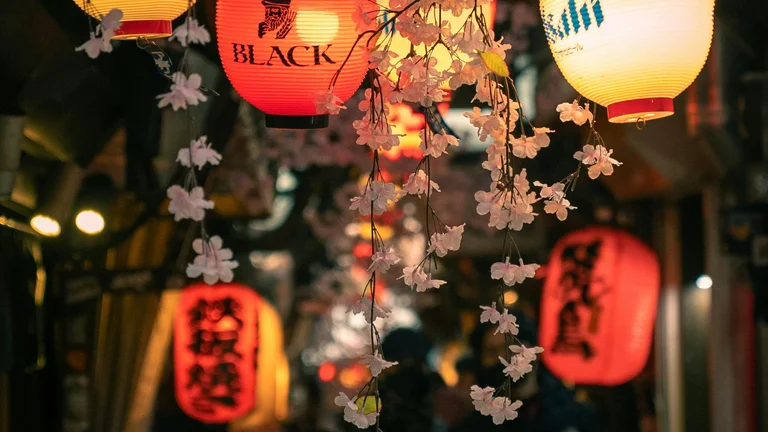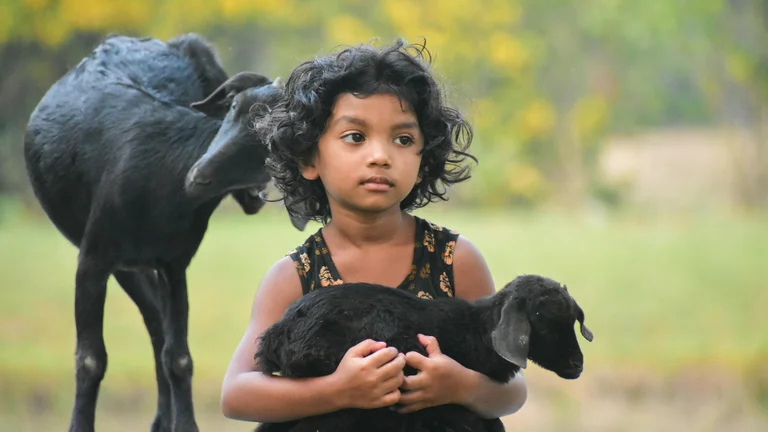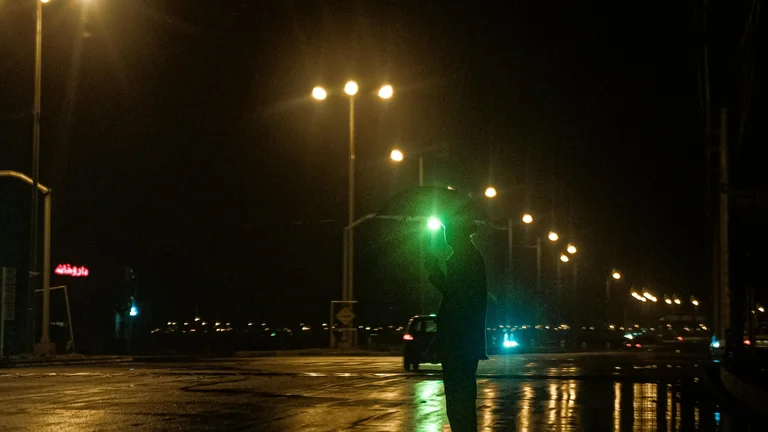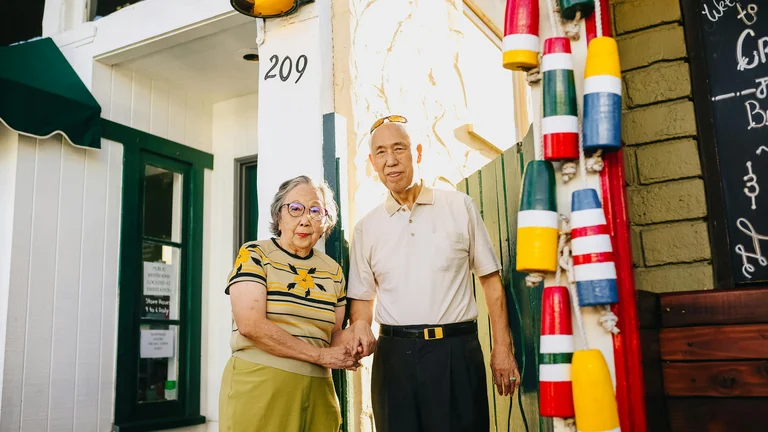Overview of Festival Scenes in K-Dramas

Korean dramas are notable for their capacity to weave cultural elements seamlessly into storylines, providing viewers not only with emotionally engaging narratives but also with vibrant depictions of Korean traditions. Among these cultural elements, festival scenes stand out as particularly charming, offering glimpses into annual celebrations that serve as backdrops for character development and romantic moments. Festival sequences in K-dramas often showcase traditional music, dance, vibrant attire such as hanboks, and communal activities that emphasize the harmony and warmth within Korean society. These scenes are crafted with attention to detail, making the experience immersive and visually appealing to viewers worldwide.
Festivals within K-dramas rarely function as mere aesthetic elements. Instead, they hold symbolic significance, often providing turning points in plotlines or critical emotional revelations between characters. This dual role heightens their impact, intertwining cultural richness with storytelling dynamics. Whether it's a lantern festival illuminating the night sky or a harvest celebration marked by collective joy, these scenes evoke nostalgia and present culture as a living, breathing entity integral to the identity of the characters.
Understanding the allure behind the cutest festival scenes requires examining not only the events themselves but also how they are structured cinematically. Directors often employ soft lighting, dreamy camera techniques, and slow-motion shots to intensify romantic or joyful interactions. The background music complements this ambiance, frequently drawing from traditional Korean instruments such as the gayageum or haegeum, adding layers of auditory authenticity. Together, these elements form a multisensory experience that transcends mere observation and invites viewers into the cultural moment alongside the characters.
Moreover, these festival scenes exemplify the narrative strategy of using setting as a character itself. Festivals serve as catalysts for interactions that would otherwise appear contrived, allowing characters to share intimate moments amid public celebration. This technique enables scripts to portray vulnerability and openness framed by collective human experience, which resonates deeply with audiences. In sum, festival scenes in K-dramas represent a multifaceted construct blending cultural exposition, narrative function, and aesthetic pleasure.
Iconic K-Drama Festival Scenes and Their Cultural Significance
Some specific festival scenes in K-dramas have gained iconic status due to their aesthetic beauty and narrative importance. One notable example is found in the drama "My Love from the Star," where the Chilseok festival is portrayed with a romantic crescendo. During this festival, traditionally held to commemorate the meeting of two star-crossed lovers in Korean folklore, the drama’s protagonists experience a moment of confession and mutual recognition under the lantern-lit sky. This scene owes its emotional weight not just to the characters but to the cultural symbolism of Chilseok, enhancing the poignancy of their interaction.
Another exemplary scene occurs in "Goblin (Guardian: The Lonely and Great God)," where the Dano Festival is depicted with elaborate rituals and traditional games. The use of the festival here stresses themes of renewal and cleansing, aligning with the narrative arcs of several characters seeking catharsis and growth. The protagonists’ participation in activities like swing riding or wearing herbal concoctions not only introduces viewers to Korean heritage but underscores the interplay between fate and free will central to the series.
In "Crash Landing on You," a more contemporary but equally charming festival scene features the characters engaging in the Chuseok harvest celebration. This festival, akin to Thanksgiving, involves preparing traditional foods like songpyeon (rice cakes) and sharing moments of familial bonding. The scene’s cuteness stems from the cultural juxtaposition of characters from divergent backgrounds navigating unfamiliar customs, fostering humor and tender connection. The depiction honors the importance of Chuseok as a moment of gratitude and reunion, making the festival scene an emotional anchor in the storyline.
These examples highlight how Korean festivals are integrated not just as set pieces but as key cultural intersections where plot development and emotional depth converge. The careful representation of attire, customary practices, and festival atmospheres encapsulates the richness of Korean identity. For the international audience, such depictions serve as cultural education, fostering appreciation and curiosity, which increases global interest in K-drama productions.
The Role of Costume and Setting in Festival Scenes
Costuming is a critical component in the portrayal of festival scenes in K-dramas, adding layers of visual interest and authenticity. Typically, characters don hanboks—traditional Korean garments characterized by vibrant colors, flowing lines, and intricate stitching. The choice of color and style often reflects the character’s social status, personality, or current emotional state, adding subtext without verbal exposition. For instance, softer pastel colors might be used during romantic scenes to convey innocence or hope, while richer hues may suggest maturity or festivity.
Set design complements costuming by recreating festival environments with meticulous attention to architectural details, decorations, and props. Streets are adorned with paper lanterns, festival stalls offer traditional snacks, and historical landmarks are integrated to anchor the scenes in specific locales. Additionally, seasonal signatures like blooming cherry blossoms or autumn foliage provide natural backdrops that enhance mood and symbolism.
The cinematic techniques employed bring these visual components into harmony. Directors and cinematographers utilize camera angles that capture expansive crowd scenes and intimate close-ups, often juxtaposing the individual’s emotions against the collective festival spirit. Lighting choices further intensify the ambiance; soft warm glows evoke nostalgia and affection, while brighter scenes highlight joy and celebration. These visual strategies enrich the atmosphere, making viewers feel embedded within the festivity.
Table 1 below summarizes typical elements found in festival scenes of K-dramas, connecting costumes, settings, and emotional undertones.
| Element | Description | Emotional/Visual Role |
|---|---|---|
| Hanbok | Traditional Korean attire, color and style varied | Expresses personality, status, mood |
| Paper Lanterns | Decorative lighting, often handmade | Creates romantic, magical atmosphere |
| Festival Stalls | Food and craft vendors typical to festival markets | Adds realism, cultural immersion |
| Natural Scenery | Seasonal elements like blossoms or autumn leaves | Symbolizes passage of time, emotional states |
| Traditional Music | Use of instruments like gayageum and drums | Enhances cultural depth and mood |
Mechanics of Storytelling Through Festival Scenes
Festival scenes in K-dramas perform multiple storytelling functions beyond surface-level depiction. They facilitate character development, relationship progression, and thematic reinforcement. For example, such scenes often provide quiet moments of reflection or opportunities for characters to reveal hidden feelings, unburden secrets, or reconcile conflicting emotions. The juxtaposition of public celebration with private vulnerability strengthens narrative complexity.
These moments also serve as narrative devices that move plots forward. Festivals are used as natural settings for planned encounters or serendipitous meetings, which would be less plausible in other contexts. This plausibility enhances viewers’ suspension of disbelief, making pivotal romantic or dramatic events feel organic and earned. Additionally, the communal aspect of festivals underscores themes of belonging, identity, and social cohesion, aligning with broader messages within Korean dramas.
Visually, festival scenes often utilize slow pacing and deliberately choreographed movements. Characters might glance towards each other amid crowds, share silent exchanges aided by symbolic gestures like festival masks or lanterns, or engage in traditional dances. This choreography layers symbolic meaning onto interpersonal dynamics. Filmmakers also employ parallel editing to juxtapose simultaneous but emotionally contrasting experiences within the festival, such as joy and sadness, unity and isolation.
List 1 below outlines common narrative functions served by festival scenes in K-dramas:
- Facilitating character confessions and revelations
- Amplifying emotional resonance through cultural symbolism
- Providing settings for fateful encounters
- Highlighting themes of community and identity
- Creating contrast between public festivity and private moments
Case Study: "Reply 1988" and Its Festival Depictions
The drama "Reply 1988" stands as a quintessential example of the effective use of festival scenes to evoke nostalgia and community spirit. Set in a Seoul neighborhood during the late 1980s, the series intricately portrays multiple traditional festivals as significant narrative milestones. These scenes emphasize familial bonds, neighborhood camaraderie, and burgeoning adolescent relationships, encapsulating both the innocence and struggles of youth.
One memorable festival sequence is the Chuseok celebration, which includes scenes of the characters preparing and sharing songpyeon, performing ancestral rites, and engaging in folk games. These cultural activities are interwoven with personal moments such as first crushes and reconciliations, enhancing the emotional texture of the drama. The authenticity of set design—the modest homes, communal courtyards, and period-specific decorations—immerses viewers in 1980s Korea.
The drama's attention to detail extends to the soundtrack, which features traditional Korean melodies mixed with popular 1980s tunes, reinforcing temporal context and atmosphere. Analyses of viewer response indicate that these festival scenes not only entertain but also trigger a collective cultural memory, encouraging intergenerational dialogue and appreciation. This impact illustrates the power of festival depictions to transcend mere narrative function and become cultural artifacts of their own.
Additionally, "Reply 1988" integrates humor and subtle drama during festival scenes, balancing lightheartedness with poignant reflection. This multidimensional portrayal accommodates diverse viewer emotions, making the scenes versatile and deeply engaging. The ensemble cast’s interactions during these moments reveal shifting dynamics, offering insights into character growth and relational complexities.
Technical Aspects of Filming Festival Scenes
Producing festival scenes in K-dramas demands considerable logistical coordination and technical expertise. Large crowds, intricate decorations, and timing aligned to cultural calendars require thorough planning. Directors must work collaboratively with cultural consultants to ensure accuracy in rituals, clothing, and props, preserving authenticity while maintaining cinematic quality.
Camera work plays a vital role in capturing the vibrancy of festival scenes. Techniques such as crane shots provide a panoramic view of festival grounds, conveying scale and communal participation. Steadicam movements follow characters through bustling markets, creating an immersive experience. Close-ups highlight subtle facial expressions amid crowd noise, facilitating emotional connection.
Lighting design also contributes significantly. The interplay of natural and artificial light, especially during nighttime festivals illuminated by lanterns or fireworks, poses challenges that require precise control to capture mood without sacrificing clarity. Post-production processes enhance color grading to accentuate festive colors and textures, ensuring the final footage resonates visually with the intended atmosphere.
Sound engineering carefully integrates ambient festival sounds—chatter, music, footsteps—with dialogue clarity. This balance maintains realism and narrative intelligibility. When traditional instruments play, sound mixing highlights their unique tonal qualities to preserve cultural integrity. Given these multifaceted production elements, festival scenes represent complex sequences that test the skill and creativity of the production team.
Relationship Dynamics Enhanced by Festival Settings
Festival scenes function as potent narrative tools for exploring and advancing relationship dynamics within K-dramas. The celebratory environment encourages characters to lower defenses and engage in candid conversations or playful interactions. The external joy contrasts internal tensions, providing fertile ground for nuanced character behavior.
Romantic relationships particularly benefit from these settings. The festival’s blend of tradition and festivity creates a romantic aura conducive to intimate moments. Lighting, costumes, and rituals add layers of meaning that amplify attraction and vulnerability, often culminating in confession scenes, shared rides on swings, or the exchange of symbolic tokens like wishing lanterns or festival masks. These interactions are visually poetic and rich in cultural symbolism.
Family dynamics also gain depth in festival contexts. The rituals often emphasize respect for elders, shared responsibility, and collective memory. Dramatic tension arising from generational conflicts or secrets frequently unfolds within the framework of festival celebrations, allowing resolutions to emerge tied to cultural values of reconciliation and unity. Friendships and community ties are similarly reinforced, reflecting the interconnectedness underlying Korean social structures.
Table 2 below compares how festival scenes impact different relationship types in K-dramas:
| Relationship Type | Festival Scene Impact | Typical Narrative Outcomes |
|---|---|---|
| Romantic Partners | Enhances intimacy and vulnerability | Confessions, bonding, reconciliation |
| Family Members | Promotes respect and solidarity | Conflict resolution, shared heritage |
| Friends | Strengthens camaraderie | Support, humor, mutual understanding |
| Community | Highlights social cohesion | Collective celebration, cultural pride |
Diverse Festival Types Depicted and Their Unique Appeal
K-dramas frequently feature a variety of festivals, each contributing distinct qualities to scenes depending on thematic context. The most commonly depicted include Chuseok, Seollal, Lantern Festivals, and traditional village festivals. Each brings unique customs, attire, and ambiance, offering diverse visual and narrative possibilities.
Chuseok, the Korean harvest festival, involves family reunions, traditional food preparation, and ancestral rites. Its warmth and emphasis on gratitude render it ideal for scenes centered on family and reconciliation. Seollal, the Lunar New Year, spotlights rituals for luck and new beginnings, often depicted with generational dialogues and hopeful resolutions.
Lantern Festivals in K-dramas symbolize hope and dreams, with characters writing wishes on lanterns before releasing them into the night sky. These scenes tend to be visually stunning and deeply romantic, often designed to mark pivotal emotional breakthroughs. Village festivals celebrate local traditions and include folk dances, traditional games, and communal feasts, showcasing cultural diversity and social bonds.
Given the multi-dimensionality of these festivals, directors select particular festivals to underscore specific story arcs or character traits. Understanding each festival’s traditional significance enhances appreciation for how scenes are crafted and contextualized. This diversity ensures that festival scenes remain fresh, culturally rich, and emotionally potent across various K-drama genres.
Tips for Viewing and Appreciating Festival Scenes in K-Dramas
For viewers seeking to maximize their appreciation of K-drama festival scenes, several practical tips can enhance understanding and enjoyment. Firstly, familiarizing oneself with basic Korean cultural and festival traditions provides valuable context, enabling viewers to recognize symbolic gestures, attire meanings, and ritual purposes. Resources such as cultural guides or documentaries on Korean festivals are excellent supplements.
Secondly, attending to the music and ambient sounds within the scenes enriches sensory experience. Traditional instruments and melodic structures are intentionally chosen to evoke specific moods and can serve as auditory cues for shifts in narrative tone. Exploring traditional Korean music independently can deepen connection.
Thirdly, observing costume details helps decode character development. Color schemes, fabric textures, and accessory choices often reflect internal states or relational dynamics. Recognizing these subtleties invites a more nuanced interpretation of the scene beyond dialogue alone.
Lastly, noting how the camera frames characters in relation to the festival environment exposes underlying thematic messages, such as isolation amidst crowd or unity through shared celebration. Viewers might rewatch scenes focusing on visual storytelling techniques to uncover layers of meaning.
List 2 below lists these tips succinctly:
- Research Korean festivals for cultural context
- Listen closely to traditional music elements
- Analyze costume colors and styles
- Observe camera angles and framing
- Rewatch key scenes to discern symbolic meanings
Global Impact and Fan Culture Around Festival Scenes
Festival scenes in K-dramas have contributed to the global spread of Korean culture, often sparking increased interest in traditional customs among international audiences. Fans frequently recreate elements from these scenes on social media platforms, such as dressing in hanboks or hosting festival-themed viewing parties. This phenomenon exemplifies cultural exchange and the soft power of media.
K-drama tourism is partially influenced by iconic festival scenes, with fans visiting filming locations during real-life festivals to immerse themselves physically in the atmosphere depicted onscreen. Local governments sometimes capitalize on this interest by organizing special events or tours aligned with popular dramas, creating a symbiotic relationship between media and cultural promotion.
Academic studies have examined the role of K-drama festival scenes in shaping perceptions of Korean identity globally. Findings indicate that these scenes humanize and demystify cultural practices, making them accessible and relatable. The romanticized but respectful portrayals have fostered a positive image of Korea’s intangible cultural heritage, enhancing national pride and intercultural understanding.
Moreover, online fan communities engage in detailed discussions analyzing the historical and cultural accuracy of festival scenes, creating a participatory scholarship ecosystem. This intersection of entertainment and education demonstrates the layered impact these portrayals hold beyond passive consumption.
FAQ - Cutest Festival Scenes in K-Dramas
What are some of the most popular festival scenes in K-dramas?
Popular festival scenes include the Chilseok Lantern Festival in "My Love from the Star," the Dano Festival in "Goblin," and Chuseok harvest celebrations in "Crash Landing on You." These scenes often feature traditional rituals and provide turning points for character relationships.
Why are festival scenes important in Korean dramas?
Festival scenes enrich K-dramas by showcasing Korean cultural traditions, advancing plotlines through natural character interactions, and creating emotionally resonant moments shaped by the festive atmosphere.
How do costume and setting enhance festival scenes in K-dramas?
Costumes like hanboks visually communicate character emotions and social context, while detailed settings with lanterns, food stalls, and seasonal natural elements immerse viewers in the festival experience, heightening authenticity and mood.
Are festival scenes accurate representations of Korean culture?
Yes, K-drama productions typically consult cultural experts to ensure traditional festivals are represented authentically, including rituals, attire, and ambient details, though some romanticized cinematic liberties may apply.
How can international viewers better appreciate festival scenes in K-dramas?
Viewers can enhance appreciation by learning about Korean festivals, paying attention to traditional music and costumes, and observing cinematic techniques like framing and lighting used to convey symbolic meanings.
Cutest festival scenes in K-dramas skillfully combine authentic Korean traditions with intimate storytelling. These scenes enrich narratives with vibrant costumes, cultural rituals, and romantic moments, providing viewers worldwide a culturally immersive and emotionally resonant experience central to the genre's global appeal.
Festival scenes in K-dramas stand as a testament to the genre’s ability to meld rich cultural heritage with engaging storytelling. Through painstaking attention to traditional details in rituals, costumes, settings, and music, these scenes not only entertain but also educate and emotionally connect viewers across the globe. Their role in deepening narrative layers and enhancing relationship dynamics makes them unforgettable moments within episodes. The continued popularity of such scenes reflects a global appetite for authentic cultural representation framed in heartwarming storytelling formats. As K-dramas evolve, festival sequences will undoubtedly remain vital, offering windows into Korea’s vibrant traditions while nurturing universal themes of love, community, and identity.






